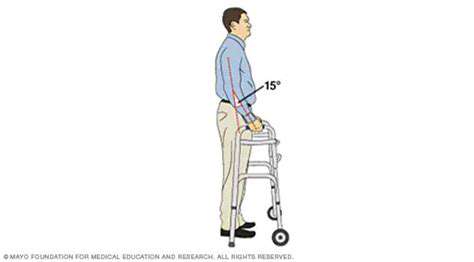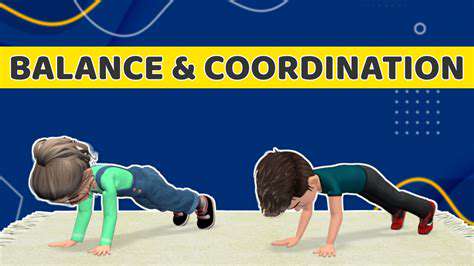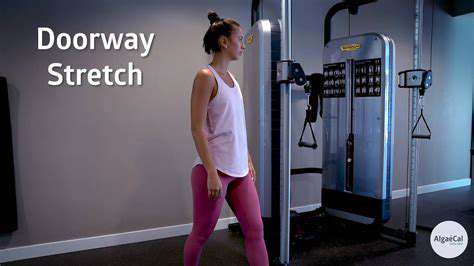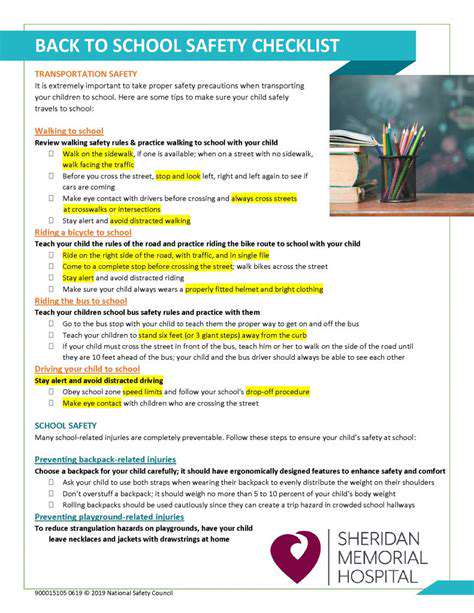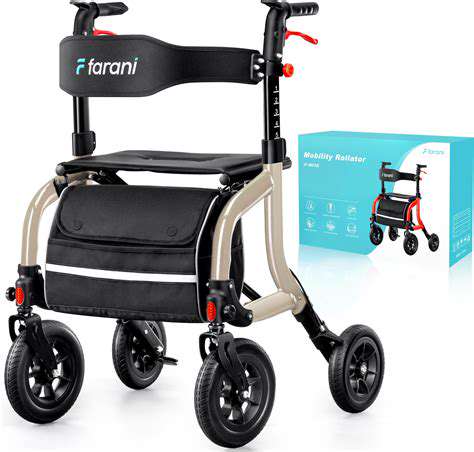Preventing Falls at Night: Balance Exercises for Seniors Before Bed
Importance of Tailored Exercises
Tailoring exercise routines for seniors is crucial for preventing falls, especially at night. A general exercise program might not address specific balance weaknesses or mobility challenges that are more pronounced in the elderly. Individualized programs, designed with the specific needs and limitations of each senior in mind, are far more effective in building strength, improving balance, and reducing the risk of falls. This personalized approach considers factors like pre-existing conditions, medications, and individual goals, ensuring the exercises are safe and achievable.
By focusing on exercises that target balance, coordination, and strength, tailored routines can significantly reduce the risk of falls, particularly at night when sensory perception and reflexes might be diminished. This targeted approach allows seniors to maintain their independence and quality of life while reducing the risk of serious injuries.
Balance-Focused Exercises
Incorporating exercises that challenge balance is paramount. Simple exercises like standing on one leg, either with or without support, can significantly improve balance. Heel-toe walking, stepping over objects, and even practicing turning movements can help seniors develop crucial neuromuscular control. These exercises, when performed correctly and gradually increased in intensity, help to enhance proprioception, the body's awareness of its position in space, which is often compromised as we age. These balance-focused activities directly address the risk factors contributing to falls at night.
It's essential to start slowly and gradually increase the difficulty of these exercises, always ensuring the senior feels stable and secure. Supervision and guidance from a physical therapist or qualified instructor are highly recommended to ensure proper form and prevent injuries.
Strength and Flexibility Training
Building strength and maintaining flexibility are vital for preventing falls. Exercises that target major muscle groups, such as legs, core, and arms, can help seniors maintain their stability and mobility. Simple exercises like squats, lunges, and chair stands can be adjusted to varying levels of intensity and support, ensuring safety and effectiveness. Activities that improve flexibility, such as gentle stretching and yoga, are also important in preventing falls. Improved strength and flexibility reduce the risk of falls by enabling seniors to maintain their balance and react quickly to potential hazards.
Safety Precautions and Considerations
Safety should be paramount in any exercise program, especially for seniors. Ensure the exercise space is well-lit and free of obstacles. Use supportive footwear and appropriate assistive devices, like canes or walkers, as needed. Having a companion present during exercise sessions, particularly for those who are less mobile, can provide added support and peace of mind. It's also vital to monitor for signs of fatigue or discomfort during exercise, and adjust the routine accordingly. These precautions are essential to mitigate risks and ensure the safety of the senior, preventing both falls and injuries during and after exercise sessions.
Regular communication with a healthcare provider about any changes in health or pain levels is crucial. They can provide valuable insights and adjustments to the exercise plan as needed, ensuring the program remains tailored to the individual's evolving needs and limitations.
Simple Balance Exercises Before Bed
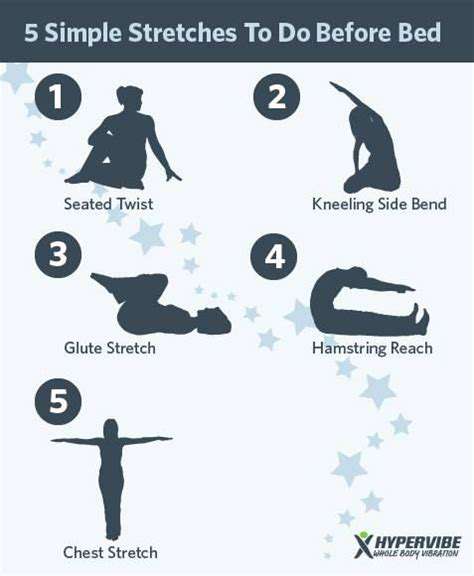
Simple Balance Exercises for Beginners
These exercises are designed to be easily incorporated into your daily routine, even if you're new to balance training. Focus on maintaining a controlled, slow pace. Gradual progression is key to avoiding injury and building strength. Start with shorter durations and increase as you feel more comfortable and confident.
Begin by standing with your feet together and eyes open. Notice your body's natural alignment and the sensations in your feet and ankles. This initial awareness is crucial for developing a deeper connection with your body and improving your balance.
Single-Leg Stance
Find a stable surface. Raise one leg a few inches off the ground, keeping your core engaged and back straight. Hold this position for a few seconds, focusing on maintaining your balance. This exercise strengthens the muscles supporting your ankles, knees, and hips, which directly impacts balance.
Gradually increase the duration of your stance as you improve. You can also try closing your eyes to further challenge your balance system. Focus on maintaining a stable posture throughout the exercise. This will help you to hone your balance control.
Heel-to-Toe Walk
Walk forward, placing one heel directly in front of the other foot. Imagine drawing a line on the floor as you walk. Keep your core engaged and your back straight to maintain balance and posture.
This exercise improves proprioception, which is the body's ability to sense its position in space. Improved proprioception directly translates to better balance and coordination in daily activities.
Side-to-Side Step
Stand with your feet shoulder-width apart. Step to the side, keeping your weight centered over your supporting leg. Maintain a stable posture and a controlled movement, and repeat on the other side. This exercise helps develop lateral stability, which is crucial for preventing falls, especially when walking or navigating uneven terrain.
Focus on maintaining a controlled tempo and rhythm. This exercise will help you maintain equilibrium during movement and in various daily situations.
Clock Reach
Stand with your feet shoulder-width apart. Imagine a clock face around you. Slowly reach out to each number on the clock face, maintaining balance and control. This targets a variety of muscles, enhancing stability and coordination.
You can increase the difficulty by performing the exercise with your eyes closed. This further challenges your balance and proprioceptive awareness.
Chair Stands
Stand near a sturdy chair for support, if needed. Slowly lower yourself to a seated position, keeping your back straight. Stand back up, maintaining control throughout the movement. This exercise improves strength and endurance, crucial for maintaining balance in various activities.
Repeat this exercise several times, gradually increasing the number of repetitions. The chair provides a reliable backup, ensuring safety while building strength.
Building Strength and Flexibility for Better Balance
Improving Strength for Enhanced Stability
Building strength, particularly in the lower body, is crucial for maintaining balance, especially at night when your awareness might be reduced. Exercises like squats, lunges, and calf raises, performed consistently, can significantly improve the strength of your leg muscles. These exercises not only strengthen the muscles directly responsible for balance but also improve overall leg function, making it easier to navigate potential obstacles in the dark. Incorporating these exercises into a regular routine, even just a few times a week, can yield noticeable improvements in your stability and reduce the risk of falls.
Focus on slow, controlled movements to maximize muscle engagement and minimize the risk of injury. Consider using resistance bands or weights to gradually increase the intensity of your workouts as you progress. Remember to consult with a healthcare professional or physical therapist before starting any new exercise program, especially if you have existing health conditions.
Enhancing Flexibility for Better Range of Motion
Flexibility plays a vital role in preventing falls, particularly at night. Maintaining a good range of motion in your ankles, knees, hips, and back allows for more controlled movements and quicker reactions to unexpected situations. Stretching exercises, such as hamstring stretches, quad stretches, and hip openers, can help improve flexibility and reduce stiffness, making it easier to maintain balance and prevent falls in the dark. Incorporate these stretches into your daily routine, or even better, dedicate a specific time each day for a comprehensive stretching session.
Gentle yoga or tai chi are also excellent options for improving flexibility and balance. These practices combine stretching with mindful movement, promoting both physical and mental well-being. Consistency is key when it comes to flexibility training. Regular stretching will not only improve your balance but also help alleviate muscle tension and pain, contributing to a more comfortable and safer nighttime experience.
Utilizing Proprioceptive Exercises for Enhanced Awareness
Proprioception, your body's awareness of its position in space, is a key component of balance. Exercises that challenge your body's sense of balance and spatial awareness, such as standing on one leg, or performing heel-toe walks, can significantly improve proprioception. These exercises, when practiced regularly, make you more attuned to your body's position and movement, allowing for quicker responses to potential hazards, reducing the risk of falls, particularly at night. Practicing these exercises, even for a short duration, can substantially enhance your body awareness in everyday situations.
Simple activities like standing with your feet close together and eyes closed, or balancing on a foam pad, can also improve your proprioceptive skills. These exercises may initially feel challenging, but with consistent practice, you'll notice a marked improvement in your balance and awareness. Remember to practice these exercises in a safe environment, ideally with support readily available if needed.
Furthermore, incorporating balance board exercises into your routine can provide a more dynamic and challenging approach to improving proprioception. These exercises, when performed correctly, can significantly enhance your body's awareness and responsiveness, leading to improved balance and reduced fall risk at night.
By focusing on proprioception, you're not only improving your ability to stay balanced but also increasing your body's responsiveness to the environment, which is critical for navigating potential hazards in the dark.
Regular practice of these proprioceptive exercises strengthens your body's ability to react to changes in posture and movement, making you more stable and less susceptible to falls, especially at night.
Paying close attention to your body's position in space, even with your eyes closed, is a crucial aspect of improving your proprioception. This practice directly enhances your body's awareness, improving your balance and reaction time, ultimately lowering the chance of falling at night.
Creating a Safe Nighttime Environment
Establishing a Predictable Routine
A consistent bedtime routine can significantly improve your sleep quality and reduce the risk of nighttime falls. Establishing a predictable schedule, including a relaxing wind-down period before bed, helps regulate your body's natural sleep-wake cycle. This consistency can improve your balance and coordination, making it easier to navigate your home safely during the night. Regular bedtime and wake-up times, even on weekends, are crucial for maintaining a healthy sleep pattern. This routine can also include activities like taking a warm bath, reading a book, or listening to calming music, all of which can promote relaxation and prepare your body for sleep.
Creating a calming and predictable environment in your bedroom is also essential. Dim lighting, comfortable bedding, and a quiet atmosphere can contribute to a more restful sleep. Minimize distractions and ensure that your bedroom is free of potential hazards, such as loose rugs or cords that could cause you to trip. A well-lit path from your bedroom to the bathroom and other areas you frequently use at night is important for ensuring safe movement.
Improving Lighting and Visual Cues
Adequate lighting is paramount for preventing falls in the dark. Ensure that all pathways and areas you frequent at night are well-lit. Use nightlights in hallways, bedrooms, and bathrooms to illuminate the space and reduce the risk of tripping over unseen obstacles. Consider using motion-activated lights to provide illumination when needed. Replacing old or flickering bulbs with brighter, more reliable ones is also a good idea. This improves your ability to see potential hazards.
Utilizing visual cues can also greatly enhance nighttime safety. Place brightly colored tape or reflective strips on steps, stairs, and edges of furniture to improve visibility. This will help you to identify obstacles and avoid tripping. Ensure that all rugs and mats have a non-slip backing to prevent them from sliding, which can cause slips and falls, especially on hardwood or tile floors. This proactive approach to visual cues can make a noticeable difference in your nighttime safety.
Evaluating and Modifying Your Home Environment
A comprehensive assessment of your home environment is vital to identify and eliminate potential fall risks. Evaluate all areas you navigate at night, paying special attention to pathways, stairs, and bathroom areas. Ensure that there are no loose rugs, cords, or clutter that could cause you to trip. Repair any damaged flooring or uneven surfaces promptly to minimize tripping hazards. Install handrails on stairs and in the bathroom for added support and stability.
Consider modifying your home to enhance accessibility and safety. Installing grab bars in the shower and near the toilet can provide crucial support and reduce the risk of falls in the bathroom. Using raised toilet seats and shower benches can also make showering and using the toilet safer. These modifications can significantly improve your safety and independence.
Strengthening Balance and Coordination
Regular balance exercises can significantly enhance your stability and reduce your risk of falls, especially at night. Incorporate exercises that improve balance into your daily routine, like standing on one leg or heel-toe walking. Tai chi and yoga are excellent options for improving balance and coordination. These exercises can help strengthen muscles in your legs and core, which are critical for maintaining balance. Consult with a healthcare professional or physical therapist to develop a personalized balance exercise program suitable for your specific needs and abilities.
Regular physical activity, including walking and light cardio, can also contribute to improved balance and coordination. These exercises help maintain muscle strength and flexibility, both vital for preventing falls. Consistent physical activity can improve your overall well-being, making you more resilient to falls and better equipped to handle unexpected situations.
